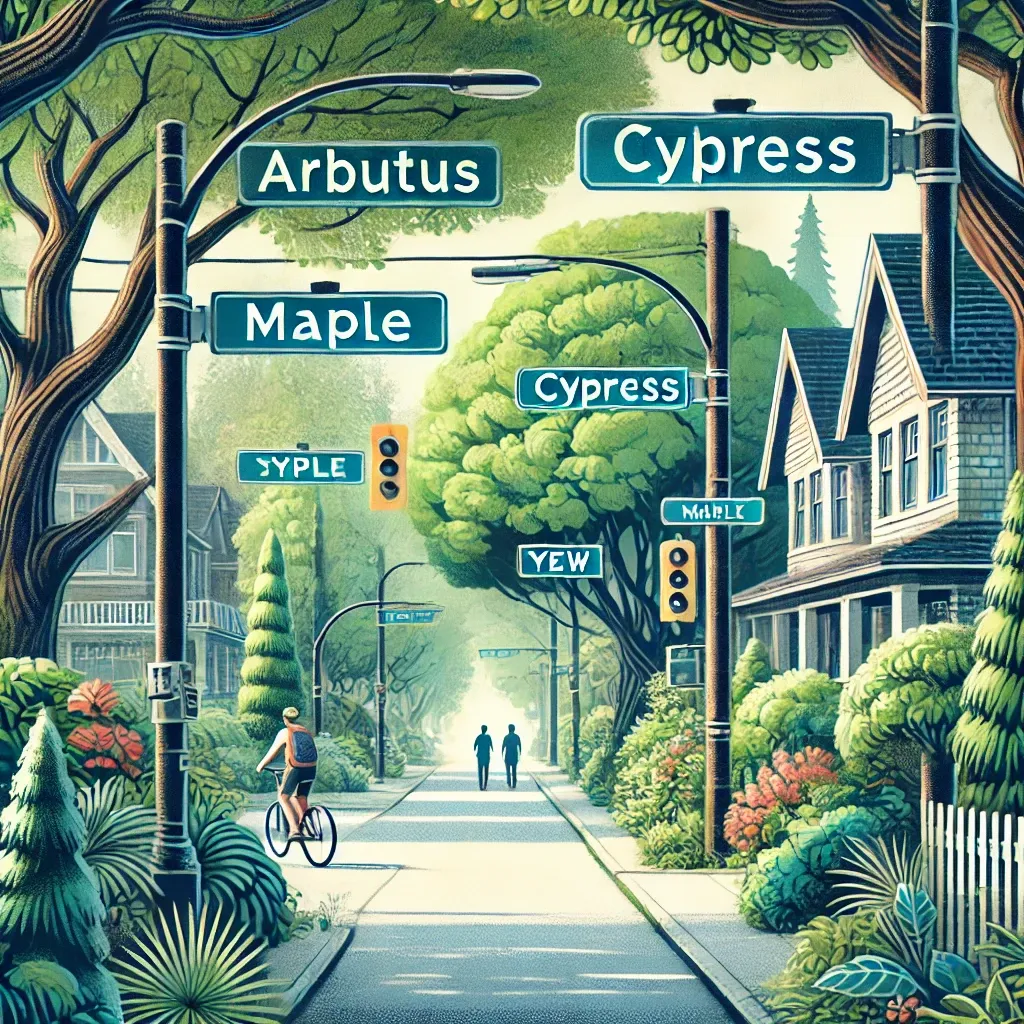
Walking through the picturesque neighborhood of Kitsilano in Vancouver, it’s hard not to notice the leafy connection in many of its street names. Cypress, Maple, Arbutus, and Yew are just a few of the streets that pay homage to the natural beauty of the region. This naming tradition not only reflects Vancouver’s lush, forested surroundings but also holds historical and cultural significance.
The naming of streets after trees was part of a broader city-planning effort in the early 20th century to reflect Kitsilano's identity as a green and serene enclave within the bustling city. During this period, Kitsilano was transitioning from a primarily industrial and working-class area to a residential neighborhood. Planners and developers aimed to create an environment that celebrated the natural landscape and fostered a connection to the outdoors—a value that remains central to Vancouver’s identity today.
These tree-named streets are more than just a nod to nature; they symbolize growth, community, and the resilience of the neighborhood. As Kitsilano has evolved, its tree-lined streets have become a defining feature, providing shade and charm for pedestrians, cyclists, and residents.
Today, these streets continue to attract nature lovers, tourists, and those who appreciate Kitsilano’s unique blend of urban living and greenery. Whether walking down Maple Street or cycling along Cypress, the tree-named streets of Kitsilano serve as a reminder of the neighborhood’s roots in nature and its enduring commitment to sustainability and beauty.
For more information, refer to the Heritage Vancouver Society for details on the cultural and environmental significance of Kitsilano's development and the incorporation of nature into urban planning.
Website: heritagevancouver.org
Tags: #WBN News - Kitsilano Edition #Karalee Greer #Kits #Kitsilano #Local Businesses #Community Business #Healthy Lifestyle #Vancouver History #Urban Nature #Kitsilano Charm #Vancouver Tourism #Heritage Vancouver Society

